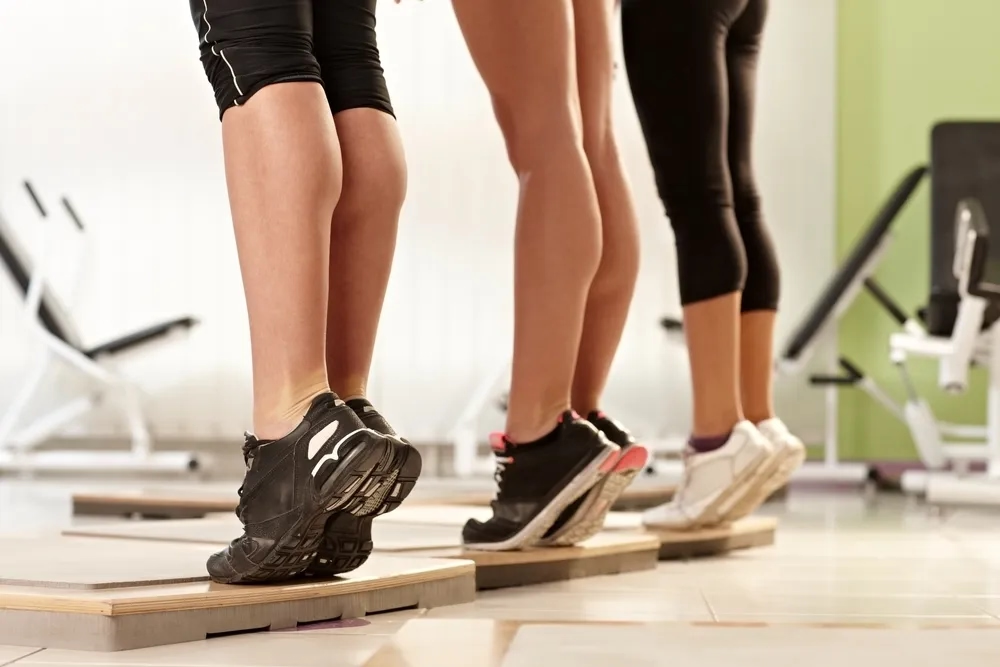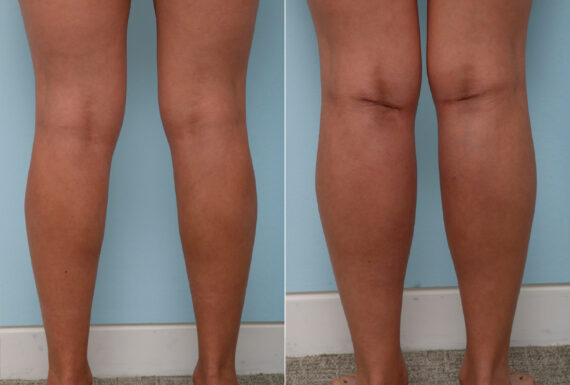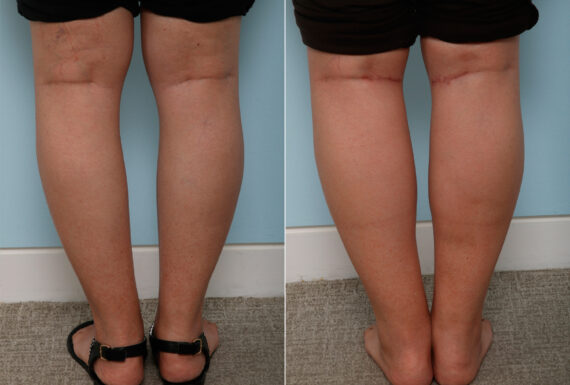Calf implants are a cosmetic surgery option for women who want to improve the look of their calves, ensuring they have a more proportionate leg shape. Surgery like this requires a good grasp of body structure and the skill to create a natural and satisfying result.
We explore the journey of getting calf implants, with advice from experienced surgeons such as Dr. Paul Vitenas. The focus includes choosing the right implant, what to expect during surgery, and tips for a smooth recovery, all to attain a pleasing calf shape.

Enhancing Leg Shape with Calf Implants
- Calf implants are designed to enhance the size and shape of the lower legs for those seeking a more proportionate appearance.
- Personalized consultations are essential to determine the correct size and shape of calf implants for your body type.
- The surgery involves placing soft, silicon-based implants into the calves through small incisions.
- Recovery from calf implant surgery requires downtime and careful management to ensure proper healing.
- Risks associated with calf implant surgery include infection, implant displacement, and dissatisfaction with aesthetic results.
Basics of Female Calf Implants
Calf implants are designed to enhance the lower body by improving the shape of the calves. They are suitable for women seeking more defined calf muscles due to aesthetic preferences or to correct muscle imbalance. Individuals who have not seen results from exercise might consider this option for a lasting solution.
These implants target areas of the calves lacking volume, conforming to the natural shape for a coherent appearance. They serve to correct body proportions and can be especially beneficial for those with muscle atrophy or other conditions affecting their health and the effects on the body.
Ideal candidates for calf augmentation are those looking for slender calves that fit their body structure and are generally healthy.
Types of Calf Implants for Women
Silicone vs. Fat Transfer
Calf implants enhance leg shape, with two primary materials available: silicone and fat transfer. Solid silicone implants are favored for their lasting shape and come in various designs for body contouring procedures.
Alternatively, fat transfer, where fat is moved from one body area to the calves, provides a natural feel using your own tissues.
- Silicone Implants:
- Durable
- Varied shapes
- Fat Transfer:
- Soft feel
- Custom-fit
Each method offers a noticeable improvement in leg contour. Women’s preferences, goals, and medical advice should guide the choice between silicone and fat transfer.
The Procedure: What to Expect During Calf Augmentation Surgery
Preparing for Calf Augmentation Surgery
Before your calf augmentation surgery, your surgeon will guide you through a preparation plan to ensure a safe and effective procedure. This includes a health evaluation, possible medication adjustments, quitting smoking, and avoiding certain drugs that could increase bleeding.
The Calf Augmentation Procedure
The calf augmentation procedure is generally an outpatient procedure with several key steps:
- Administering anesthesia for comfort
- Marking the legs for implant placement
- Making incisions and crafting pockets for the implants
- Inserting and precisely positioning the implants
- Carefully closing incisions to reduce scarring visibility
Post-surgery, patients will follow a recovery plan provided by the surgeon to aid in healing and achieve the desired results from the calf implant procedure.
Immediate Post-Operative Care Guidelines
Following calf implant surgery, swift recovery requires adherence to specific care practices for optimal healing. Key steps in the healing process include:
- Elevating your legs to minimize swelling.
- Using cold compresses to alleviate discomfort as suggested.
- Taking prescribed medication to manage pain and ward off infection.
Limit physical exertion and heed advice on resuming regular activities.
Long-Term Care for Enduring Results
For the long-term success of your calf implants, consistent care is crucial. To ensure sustained results, consider these practices:
- Ongoing check-ups to observe healing.
- Keeping your weight stable to preserve the implants’ appearance.
- Gradually introducing a balanced exercise routine, without overloading the calves.
These measures will extend the benefits of your calf implant surgery and support healing.
Calf Enhancement and Its Advantages
Calf implants are used in body contouring techniques to create proportion and balance, often desired by women to shape slender calves. This method of calf enhancement provides a defined look without overly promotional language.
The emotional health benefits from this physical change are noteworthy. With calf implants, women gain confidence and embrace body positivity, which are vital for psychological well-being. The cost of calf implants represents an investment in one’s self-image and personal contentment.
- Calf enhancement: Shapes slender calves for a balanced appearance.
- Emotional health: Gains in confidence and positivity from a satisfying body image.
- Cost of calf implants: An investment in personal well-being and satisfaction.
Potential Risks and Complications Associated with Calf Implants
Calf implant surgery brings potential risks, such as infection, displacement, and poor healing. To reduce these risks, choose a skilled surgeon and follow care guidelines carefully.
- Infection may be avoided with a sterile environment and prescribed antibiotics.
- Implant Displacement can be prevented by limiting heavy activity while healing.
- Poor Wound Healing can be improved with good nutrition and avoiding smoking.
Monitor your healing progress to identify any complications. Watch for increased pain or swelling, changes around the incision, implant movement, or fluid buildup. Report any concerns to your healthcare provider to manage the risk and promote recovery. Remember, facing this health challenge requires following medical advice closely.
The Role of Physical Fitness in Enhancing Calf Implant Results
Strengthening the calf muscle through exercise can improve the results of a calf implant. Targeted workouts after a method for calf augmentation can define the calves more and support the health benefits of being active. Key exercises include:
- Calf raises: To build the calf muscle.
- Leg presses: Using a lower foot position to target the calves.
- Stair climbing: Regular sessions to engage the calf muscle.

It’s important for bodybuilders, including female bodybuilders, to continue a nutritious diet and consistent exercise post-surgery. This lifestyle contributes to the appearance of calf implants and offers long-term health benefits.
How to Choose the Right Surgeon for Calf Implant Surgery
Evaluating a Plastic Surgeon’s Qualifications
Selecting a surgeon for calf implant surgery involves checking qualifications and assessing comfort. Focus on:
- Credentials: The plastic surgeon should be board-certified, indicating completion of essential training and adherence to professional standards.
- Experience: Choose an experienced surgeon with a track record in calf implants to ensure familiarity with the procedure.
Assessing Compatibility
During the consultation, ask relevant questions:
- Number of calf implant surgeries performed?
- Expectations for recovery and results?
- Availability of previous patient photos?
These inquiries help ensure you pick a plastic surgeon capable of meeting your needs.
Realistic Expectations: Visualizing the Outcome of Calf Implants
Calf implants can immediately enhance the contour of your lower legs. The final, more natural appearance takes shape as swelling decreases over time.
- Visible improvement is seen right after surgery.
- The true outcome materializes after the swelling goes down.
- Calf implants boost fullness, not skin texture or leg structure.
Understanding the procedure’s scope helps ensure satisfaction with calf implants, contributing to desirable plastic surgery outcomes.
Leg Contouring Without Surgery
People interested in enhancing their leg contours without surgery have a few options. Using one’s body fat, fat transfer can shape the legs by adding fullness to specific areas.
Options for Aesthetic Leg Enhancement
Calf implants offer a lasting way to enhance leg shape but differ from less invasive methods. Here’s a comparison:
- Calf Implants
- Surgical
- Requires recovery time
- Immediate and lasting results
- Fat Transfer
- Less invasive
- Quicker recovery
- Uses natural body fat
- Body Implant Procedures
- Tailored to individual needs
- Surgical with recovery
- Significant visible results
Patients should consult a healthcare provider to determine the most suitable leg-shaping method.
Key Takeaways on Calf Implants for Women
Calf implants are a surgical option for women aiming to improve their leg shape and achieve a more proportionate body silhouette. This procedure can enhance lower leg contours and contribute to a balanced figure, offering:
- Enhanced lower leg shape with calf implants, adding definition.
- Improved body silhouette by ensuring proportionality with the overall figure.
- Desirable plastic surgery outcomes that may increase personal confidence and satisfaction.
If you’re considering female calf implants to improve the shape of your legs, it’s important to seek advice from a qualified professional like Dr. Paul Vitenas. With his extensive experience and commitment to achieving balanced, beautiful results, you can trust that you’re in good hands.
For more information on calf implants or to discuss your specific needs, schedule a consultation with Dr. Vitenas in Houston. Our team is ready to provide personalized care and guide you through every step of the process to help you reach your aesthetic goals.


